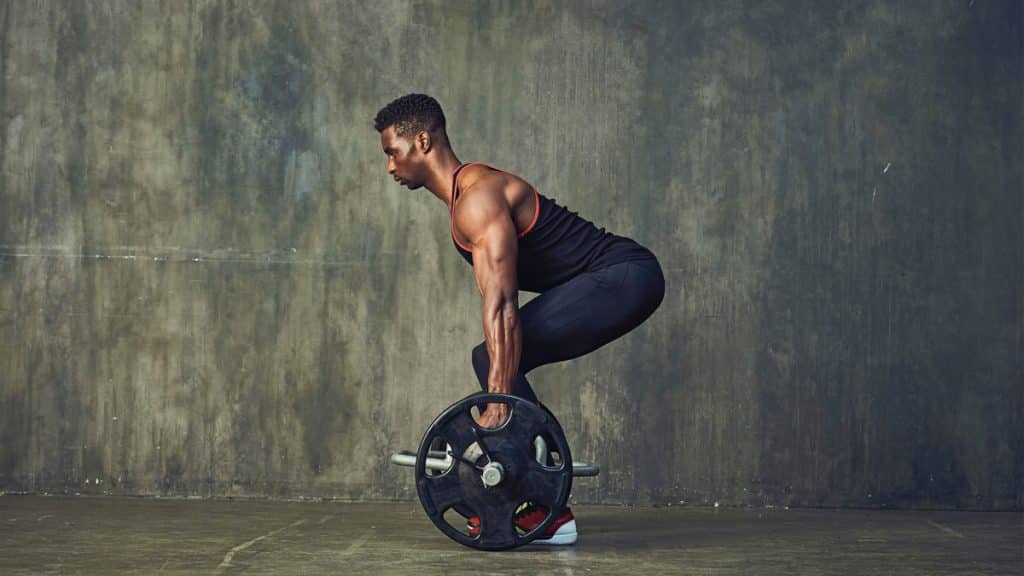Strong legs form the foundation of a healthy, functional body – and you don’t need complex routines to build them effectively. Research shows you’ll achieve optimal results by keeping your leg workouts simple and targeted.
Instead of lengthy, complicated sessions, you’ll benefit from focusing on 3-5 key exercises per workout, performing 3 sets of 8-12 repetitions each. Such an approach not only saves time but also helps prevent overtraining while maximizing muscle growth.
Let’s learn more about all the proven strategies that work for anyone, regardless of age or athletic ability – and you can start seeing results with just minutes of focused training!
Understanding Leg Training
Leg training focuses on developing strength and mobility through compound movements that target multiple muscle groups simultaneously. Effective leg workouts must integrate proper form techniques with progressive overload principles and proper rest techniques for long-lasting results.
Muscle Groups Involved
Leg exercises target four primary muscle groups that work together during movement patterns:
- Quadriceps: Located on the front of the thigh, controlling knee extension.
- Hamstrings: Running along the back of the thigh, managing hip extension and knee flexion.
- Glutes: The largest muscles in the body, powering hip movement stability.
- Calves: Two muscles (gastrocnemius and soleus) controlling ankle flexion.
Basic Principles of Leg Workouts
You can always find a structured leg training program in the app for wellness, HeyZen. Usually, it incorporates these fundamental elements:
- Progressive overload: Increasing weight volume or intensity over time.
- Movement patterns: Squats lunges, hip hinges, calf raises.
- Rep ranges: 8-12 repetitions for muscle growth; 3-5 sets per exercise.
- Rest periods: 60-90 seconds between sets for optimal recovery.
- Training frequency: 1-3 sessions per week with 48 hours between workouts.
Mobility Requirements
- Hip mobility: 120 degrees of flexion, 30 degrees of extension.
- Ankle dorsiflexion: 20 degrees of range.
- Knee flexion: 130 degrees for squat movements.
- Spine stability: Neutral position throughout exercises.
|
Joint |
Required Range |
Purpose |
|---|---|---|
|
Hip |
120° flexion |
Squat depth |
|
Ankle |
20° dorsiflexion |
Movement stability |
|
Knee |
130° flexion |
Exercise execution |
Essential Leg Exercise Breakdown
An effective leg workout must combine strength training with mobility work to create a comprehensive lower-body routine. Each category targets specific aspects of leg development through proven movement patterns.
Compound Movements
Compound exercises engage multiple muscle groups simultaneously for maximum strength gains:
- The squat activates quadriceps, hamstrings, and glutes through a full range of hip bends with feet shoulder-width apart.
- Deadlifts target posterior chain muscles by hinging at the hips while maintaining a neutral spine.
- Lunges work unilateral strength development through forward, backward, and side variations.
|
Exercise |
Primary Muscles |
Sets x Reps |
|---|---|---|
|
Squats |
Quads, Glutes, Hamstrings |
3 x 8-12 |
|
Deadlifts |
Hamstrings, Glutes, Lower Back |
3 x 8-12 |
|
Lunges |
Quads, Glutes |
3 x 10 per leg |
Isolation Exercises
Isolation movements focus on specific muscle groups for targeted strengthening:
- Leg extensions isolate the quadriceps through controlled knee extension movements.
- Leg curls emphasize hamstring development using dedicated equipment or resistance bands.
- Calf raises strengthen gastrocnemius and soleus muscles through plantar flexion.
Mobility Drills
Mobility exercises enhance joint range flexibility for improved movement patterns:
- Hip circles loosen tight hip flexors through controlled rotational movements.
- Ankle mobility exercises include pointing, flexing, and rolling movements.
- Dynamic stretches incorporate leg swings and knee drives to improve overall movement quality.
Progressive Variations
Exercise progression maintains consistent strength gains through systematic intensity increases:
- Add resistance bands to bodyweight exercises for increased difficulty.
- Incorporate tempo changes like 3-second lowering phases or pause reps.
- Advance from bilateral movements (two legs) to unilateral (single leg) variations for increased stability and strength development.
|
Progression Type |
Example |
Benefit |
|---|---|---|
|
Load |
Add weight |
Strength increase |
|
Tempo |
Slow eccentric |
Muscle control |
|
Balance |
Single leg |
Stability improvement |
Form and Technique Focus
Proper exercise form maximizes results while minimizing injury risk in leg workouts. Each movement requires attention to specific technical elements for optimal performance.
Common Mistakes
- Rounding the lower back during squats or deadlifts.
- Allowing knees to cave inward during leg presses or squats.
- Lifting heels off the ground in squatting movements.
- Performing partial instead of full-range repetitions.
- Using momentum rather than controlled movements.
- Rushing through eccentric (lowering) phases.
Proper Alignment
Keep your spine neutral throughout leg exercises by maintaining three key points:
- Stack shoulders directly over hips in standing exercises.
- Position feet hip-width apart with toes pointed slightly outward.
- Align knees with toes during bending movements.
- Create a stable base by distributing weight evenly across the foot.
Breathing Patterns
Master these breathing techniques to enhance stability:
- Inhale during eccentric (lowering) phases.
- Exhale during concentric (lifting) phases.
- Brace core muscles before initiating movement.
- Maintain a consistent breathing rhythm throughout sets.
- Use diaphragmatic breathing for better core stability.
Movement Patterns
- Start each exercise from a stable position.
- Initiate movement from the hips in squat patterns.
- Drive through heels during lifting phases.
- Control descent speed in all exercises.
- Maintain tension throughout the entire range of motion.
|
Movement Type |
Primary Focus |
Key Alignment Check |
|---|---|---|
|
Squat |
Hip hinge |
Knees track toes |
|
Lunge |
Forward knee |
Back knee 90° bend |
|
Deadlift |
Hip hinge |
Neutral spine |
|
Calf Raise |
Ankle extension |
Vertical shin |
Progressive Training Strategies
Progressive training strategies adapt exercises to match your current fitness level while creating systematic improvements in strength mobility. These strategies incorporate specific modifications escalating from beginner to advanced levels.
Beginner Modifications
Starting with bodyweight exercises establishes proper form control:
- Box squats limit depth until mobility improves, providing a stable progression point.
- Step-ups on a 4-6 inch platform build single-leg strength gradually.
- Wall-assisted lunges offer balance support during movement pattern development.
Intermediate Progressions
- Adding resistance bands increases tension at specific points in exercises.
- Tempo variations like 3-second lowering phases enhance muscle control development.
- Single-leg Romanian deadlifts improve balance coordination while building hamstring strength.
- Walking lunges with dumbbells integrate dynamic movement patterns.
Advanced Variations
Plyometric movements like jump squats develop explosive power. These variations incorporate:
- Olympic lifting derivatives.
- Combination movements.
- Unstable surface training.
- Complex movement patterns.
Load Management
Training load follows a structured progression pattern based on performance indicators:
|
Training Level |
Sets |
Reps |
Rest Period |
|---|---|---|---|
|
Beginner |
2-3 |
12-15 |
60 seconds |
|
Intermediate |
3-4 |
8-12 |
90 seconds |
|
Advanced |
4-5 |
4-8 |
120 seconds |
Load increases occur when the form remains consistent across all prescribed sets and reps. Deload weeks reduce volume by 40% every 4-6 weeks, maintaining progress while preventing plateaus.
Recovery and Maintenance
Recovery protocols enhance leg strength gains while mobility work prevents movement limitations. Both elements create a sustainable approach to leg training.
Rest Protocols
Optimal recovery between leg workouts requires 48-72 hours of rest. Schedule intense leg training sessions 2-3 times per week with a day of rest between sessions. Active recovery activities like walking or swimming maintain blood flow without overtaxing the muscles. Follow these specific rest guidelines:
- Maintain 90-120 seconds of rest between sets for strength focus.
- Allow 60 seconds of rest between sets for hypertrophy focus.
- Take 3-5 minutes of rest after compound movements.
- Schedule 1 complete rest day after each leg workout.
Mobility Work
Mobility exercises maintain joint health through targeted movement patterns. Perform these exercises daily for 10-15 minutes:
- Hip circles in both directions: 10 repetitions on each side.
- Ankle rotations: 15 repetitions per foot.
- Dynamic stretches: 8-12 repetitions per movement.
- Joint mobilization drills: 30-45 seconds per position.
Injury Prevention
Preventive measures reduce training setbacks through systematic approaches:
- Perform proper warm-up sequences for 8-10 minutes.
- Master exercise form before increasing weights.
- Use compression gear during intense sessions.
- Apply ice therapy for 15-20 minutes after workouts.
- Monitor movement patterns for compensation.
Long-Term Sustainability
- Rotate exercise variations every 4-6 weeks.
- Track strength improvements in a training log.
- Implement deload weeks every 8-12 weeks.
- Adjust volume based on recovery capacity.
- Include mobility assessments monthly.
- Balance strength work with flexibility training.
|
Recovery Component |
Frequency |
Duration |
|---|---|---|
|
Rest Between Sets |
3-5x/exercise |
60-120 seconds |
|
Active Recovery |
2-3x/week |
20-30 minutes |
|
Mobility Work |
Daily |
10-15 minutes |
|
Deload Weeks |
Every 8-12 weeks |
7 days |
Conclusion
Building strong and mobile legs doesn’t require complex routines or countless hours in the gym. By focusing on proper form, mastering fundamental movements, and implementing progressive overload, you’ll achieve remarkable results. Remember to listen to your body, maintain consistent training, and prioritize recovery between sessions.
Your leg training success depends on finding the right balance between challenging yourself and allowing adequate rest. Start with the basics, perfect your form, and gradually increase intensity as you build confidence and strength. With dedication to these principles, you’ll develop powerful functional legs that serve you well in both daily activities and athletic pursuits.
Stay committed to your leg training journey and watch your strength, mobility, and overall fitness transform!





















